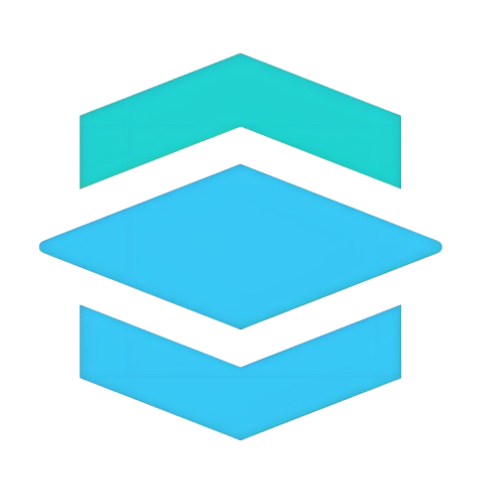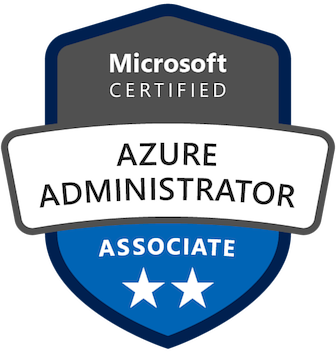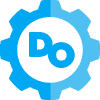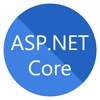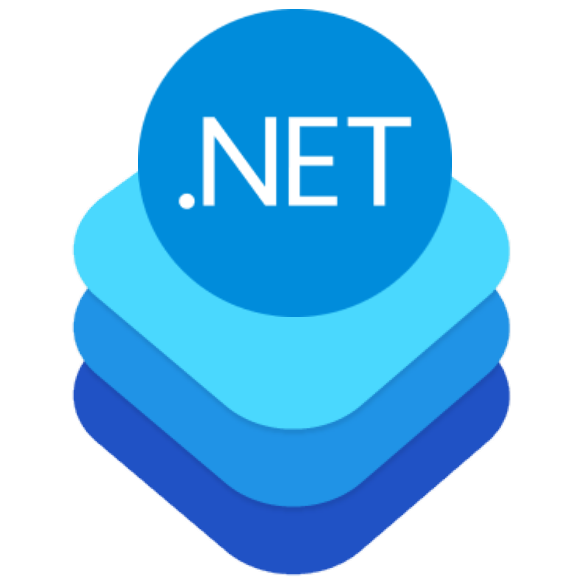26
NovTop 50 Agile Interview Questions and Answers
Agile interview questions and answers are essential for anyone preparing for roles in software development, project management, or team leadership. Agile is a widely adopted methodology that focuses on iterative development, collaboration, and delivering customer value efficiently.
In this Devops tutorial, you’ll find a comprehensive collection of questions covering Agile fundamentals, Scrum, Kanban, Lean Agile, metrics, DevOps integration and more. Let's dive in!
How to Crack an Agile Interview?
Cracking an Agile interview requires strong understanding of Agile concepts, frameworks, roles, and metrics, backed by real-world examples, soft skills, and adaptability.
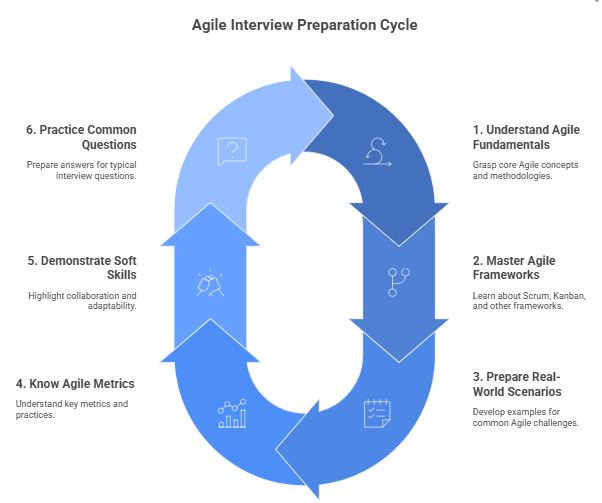
1. Understand Agile Fundamentals
- Be clear about Agile values, principles, and methodology.
- Know the difference between Agile and Waterfall, and concepts like iterative vs incremental development.
- Be ready to explain key terms: Scrum, Kanban, Sprints, Product Backlog, Story Points, DoD, WIP, velocity.
2. Master Agile Frameworks and Roles
- Understand Scrum, Kanban, SAFe, and Lean Agile frameworks.
- Know the responsibilities of Product Owner, Scrum Master, Agile Coach, and Development Team members.
- Be able to explain how teams collaborate and deliver value.
3. Be Prepared for Real-World Scenarios
- Changing requirements
- Missed sprint goals
- Scope creep
- Remote teams
- Underperforming members
4. Know Agile Metrics and Practices
- Understand velocity, lead time, cycle time, throughput, burn-down charts, cumulative flow diagrams.
- Be able to explain TDD, BDD, CI/CD, and refactoring.
- Discuss how metrics help measure progress and improve delivery.
5. Demonstrate Soft Skills
- Highlight your collaboration, adaptability, communication, and problem-solving skills.
- Show that you can work in self-organizing teams and respond to change effectively.
6. Practice Common Questions
- Go through frequently asked Agile interview questions and prepare concise, clear answers.
- Be ready for conceptual, scenario-based, and behavioral questions.
Agile Interview Questions and Answers For Freshers:
1. What is Agile Methodology?
Agile does not follow a strict step-by-step plan, as seen in the Waterfall model. It is flexible and adaptable. This approach encourages continuous feedback, teamwork, and quick responses to changing requirements.
Key Characteristics of Agile:
- Iterative and Incremental Development: Its work is divided into small cycles, usually lasting 1 to 4 weeks.
- Collaboration: Developers, testers, and customers work closely together.
- Customer-Centric: Frequent feedback ensures the product meets user needs.
- Flexibility: Its requirements can be change at any time, even late in the project.
- Working Software: The priority is always delivering a working version of the product, not just documents.
2. Explain the difference between Agile and Waterfall models.
| Aspect | Agile Model | Waterfall Model |
| Approach | Iterative and incremental: Work is divided into short cycles (sprints/iterations). | Linear and sequential – project follows fixed SDLC phases: Requirement → Design → Development → Testing → Deployment. |
| Flexibility | Highly flexible, requirements can be modified anytime based on feedback. | Rigid, once requirements are defined, changes are costly and difficult. |
| Delivery | Working software is delivered frequently (every 1–4 weeks). | Entire product is delivered only at the end of the project. |
| Customer Involvement | Customer is continuously involved, giving feedback after each iteration. | Customer involvement is minimal – mostly at the beginning (requirements) and end (delivery). |
| Risk Handling | Issues identified early, less risky | High risk if errors found late |
| Best Suited For | Projects where requirements change frequently | Projects with well-defined, stable requirements |
| Examples | Mobile apps, web applications, startups, evolving software products. | Banking systems, government projects, infrastructure, or defense projects. |
3. What are the 12 principles of the Agile Manifesto?
The Agile Manifesto (2001) is built on 4 values and 12 guiding principles. These principles explain how Agile teams should work to deliver value efficiently and adaptively.
- Satisfy the customer through early and continuous delivery.
- Welcome changing requirements, even late in development.
- Deliver working software frequently (weeks rather than months).
- Business people and developers must work together daily.
- Build projects around motivated individuals and trust them.
- Face-to-face conversation is the most effective communication.
- Working software is the primary measure of progress.
- Promote sustainable development (no overwork).
- Continuous attention to technical excellence improves agility.
- Simplicity, the art of maximizing work not done is essential.
- Best architectures, requirements, and designs emerge from teams.
- Teams regularly reflect and adjust to become more effective.
4. What are the advantages and disadvantages of Agile?
Advantages of Agile
- Faster delivery: Working software gets delivered in small parts, called sprints, so customers don’t have to wait until the end.
- Flexibility: Changes can happen at any time, even late in the project.
- Customer satisfaction: Regular feedback keeps the product in line with customer needs.
- Risk reduction: Frequent testing and reviews help identify problems early.
- Team collaboration: Developers, testers, and business people work closely together.
- Better quality: Continuous testing, refactoring, and feedback improve software quality.
Disadvantages of Agile
- Unclear timelines and costs: As requirements change, it is hard to predict the exact budget and schedule.
- Needs experienced team: Agile relies on self-organizing teams. Without discipline, it can fail.
- Scope creep: Frequent changes can lead to endless work if not controlled.
- Less documentation: The focus is on working software, so documentation may be weak.
- Not ideal for fixed projects: For projects with strict deadlines, budgets, or government regulations, Agile may not work well.
5. What are the key Agile frameworks or methodologies?
Key Agile Frameworks / Methodologies are:
1. Scrum
- Scrum is the most popular Agile framework that organizes work into short cycles called sprints (1–4 weeks).
- It uses roles like Product Owner, Scrum Master, and Development Team with daily stand-up meetings.
2. Kanban
- Kanban focuses on visualizing work using a board with columns like To Do, In Progress, Done.
- It helps teams manage workflow, avoid bottlenecks, and deliver continuously.
3. Extreme Programming (XP)
- XP emphasizes engineering practices like pair programming, test-driven development, and frequent releases.
- The goal is to improve software quality and respond quickly to customer needs.
4. Lean
- Lean aims to eliminate waste, improve efficiency, and deliver value faster.
- It’s about doing only what is necessary to maximize customer benefit.
5. SAFe (Scaled Agile Framework)
- SAFe is used in large organizations to scale Agile across multiple teams.
- It aligns teams around business goals while keeping Agile principles intact.
6. What is a user story in Agile?
A user story is a short, simple description of a feature or requirement written from the end-user’s perspective. It helps the development team understand what the user wants, why they want it, and what value it provides.
Purpose of User Stories
- Keep requirements simple and user-focused.
- Encourage conversation between developers, testers, and business people.
- Act as the starting point for detailed tasks in a sprint.
7. Explain iterative vs. incremental development in Agile.
Iterative Development
- This approach focuses on continuously improving the same product or feature.
- Each iteration makes the product better by refining, adjusting, or improving what already exists.
- The goal is to learn from feedback and gradually move closer to the final solution.
- Iteration 1: Simple username and password login
- Iteration 2: Add “Forgot Password” option
- Iteration 3: Add Google and Facebook login
- Iteration 4: Add biometric login using fingerprint or face ID
Incremental Development
- This method focuses on delivering new features step by step.
- Each increment adds a complete piece of functionality that works on its own.
- The goal is to grow the product by adding more features over time.
- Increment 1: User login and registration
- Increment 2: Product catalog browsing
- Increment 3: Shopping cart
- Increment 4: Payment system
Comparison Table Between Iterative and Incremental development
| Aspect | Iterative | Incremental |
| Focus | Refining the same feature/product repeatedly | Adding new features one by one |
| Output | Improved versions of the same product | New modules or functionalities each time |
| Goal | Get closer to the best solution through feedback | Grow the system step by step |
| Example | Improving login system over several iterations | Adding cart, payment, and order features step by step |
8. What is velocity in Agile?
Velocity in Agile is the amount of work a team can complete in a sprint, usually measured in story points. It helps in planning and forecasting how many sprints are needed to complete the backlog.
- It is calculated at the end of each sprint.
- It represents the average amount of work delivered.
- It is used for forecasting future sprints and planning release timelines.
9. What is a product backlog?
A product backlog is a prioritized list of all the work that needs to be done for a product. This includes features, improvements, bug fixes, and technical tasks. It serves as the single source of requirements for the development team.
Key Points About Product Backlog:
- Owned by the Product Owner: They manage, update, and prioritize the product backlog
- Dynamic and evolving: Items can be added, removed, or reprioritized at any time.
- Prioritized list: The most important items are at the top and worked on first.
- Includes different items: Like New features, changes, technical improvements, and bug fixes.
Example: For an e-commerce app, the product backlog may include:
- Add shopping cart functionality
- Enable online payments
- Improve search feature
- Fix login bug
- Optimize website speed
10. What is Refactoring in Agile?
Refactoring in Agile is the process of restructuring existing code to improve its readability, simplicity, and maintainability, without changing what the code does for the user.
Agile Interview Questions and Answers for Intermediates
11. What are the key difference between Agile and Scrum?
| Aspect | Agile | Scrum |
| Definition | Agile is a set of principles that’s iterative and incremental. | Scrum is an implementation of the agile methodology. |
| Best for | Suited for projects involving a small team of experts. | They are used in projects where the requirements are constantly changing. |
| Leadership | The project head takes care of all tasks is vital to the project. | There’s no leader, the scrum master, and the team addresses the issues. It involves cross-functional, self-organizing teams. |
| Flexibility | In agile, changes cannot be handled frequently. | It enables teams to react to changes quickly. |
| Delivery | The methodology requires frequent delivery to the end user. | With sprints, builds are delivered to clients for feedback |
12. Explain the roles in Scrum.
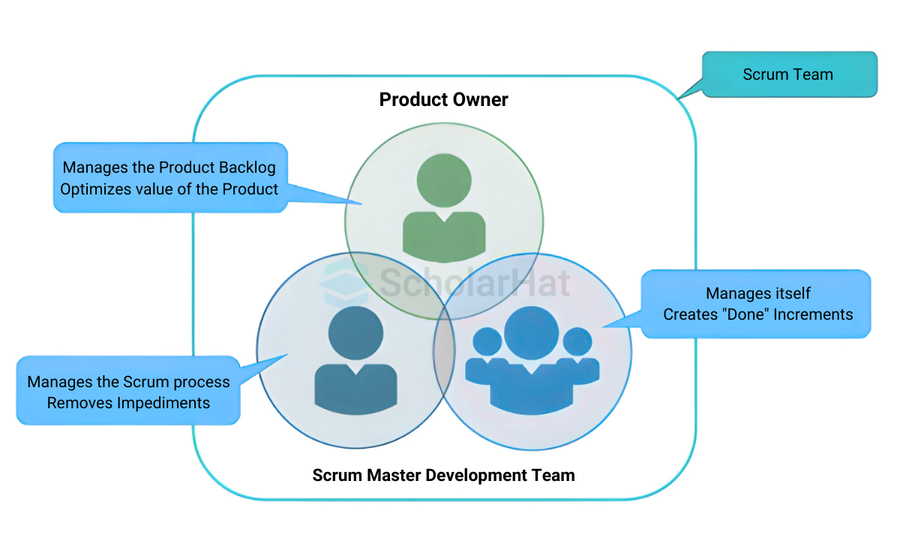
- The Product Owner represents the customer, defines the product vision, and manages the product backlog.
- They prioritize features to maximize business value.
- Key Skills: Communication, prioritization, market understanding
2. Scrum Master (SM):
- The Scrum Master is a coach and facilitator who ensures the team follows Scrum principles.
- They remove impediments and protect the team from distractions.
- Key Skills: Servant leadership, problem-solving, conflict resolution.
3. Development Team:
- The Development Team is cross-functional (developers, testers, designers, etc.) and self-organizing, decides how to complete work.
- They build, test, and deliver a potentially shippable product increment at the end of each Sprint.
- Key Skills: Technical expertise, teamwork, ownership mindset.
13. What do you mean by Scrum of Scrums (SoS)?
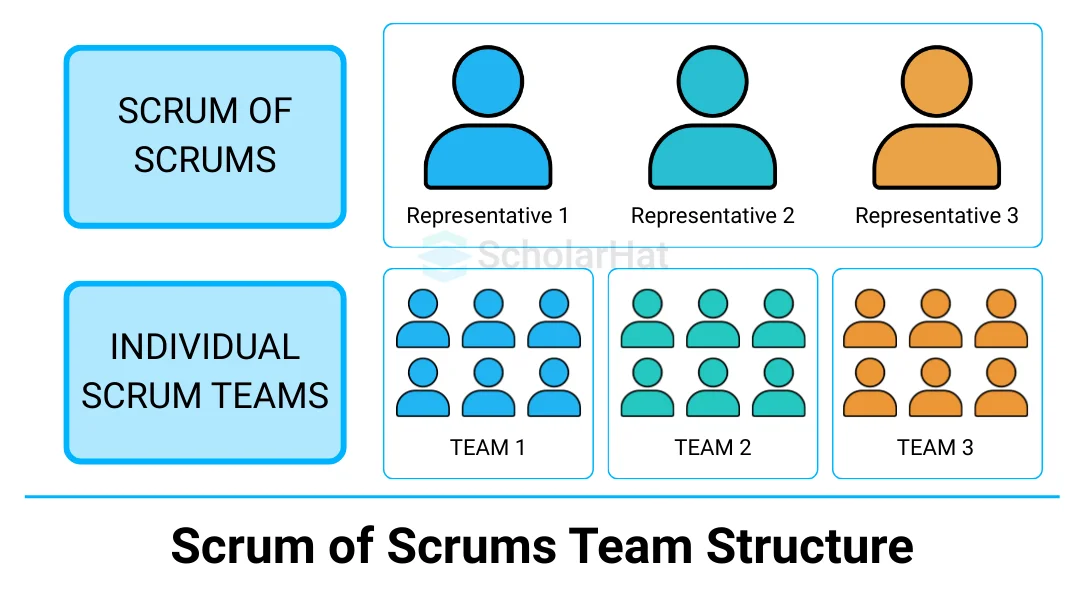
14. What is the difference between product backlog and sprint backlog?
| Aspect | Product Backlog | Sprint Backlog |
| Definition | A prioritized list of all features, enhancements, bugs, and requirements for the product. | A subset of the product backlog selected for a particular sprint. |
| Scope | Covers the entire product vision (long-term). | Covers the current sprint goal (short-term). |
| Ownership | Maintained and prioritized by the Product Owner. | Managed and updated by the Development Team. |
| Timeframe | Continuously updated throughout the project. | Fixed only for the duration of the sprint. |
| Purpose | Represents everything that could be done for the product. | Represents what will actually be done in the sprint. |
16. What is a sprint retrospective?
- Reflection: The team reflects on how the last sprint went in terms of collaboration, processes, and tools.
- Identify Issues: Discuss problems, challenges, or blockers faced during the sprint.
- Celebrate Successes: Recognize what went well and reinforce good practices.
- Continuous Improvement: Decide on specific, actionable improvements to try in the next sprint.
17. What is a Release burn-down chart?
18. How do you handle scope creep in Agile?
Scope creep means adding new requirements or features beyond the agreed scope, without adjusting time, cost, or resources.
Ways to Handle Scope Creep in Agile:
- New requests are added to the product backlog.
- The Product Owner evaluates and prioritizes them against existing backlog items.
- Low-value requests are deferred or removed.
- Any new scope must go through a review process.
- Stakeholders, Product Owner, and team discuss impact on time, cost, and resources before approval.
- Agile uses timeboxed sprints, so new requirements cannot enter a sprint once it has started.
- This protects ongoing work and avoids disruptions.
- Regular meetings (sprint reviews, backlog grooming) ensure transparent discussions.
- Stakeholders understand that adding scope may require removing or rescheduling other items.
- Teams continuously ask: “Does this change add significant value to the customer?”
- Only high-value changes are considered within scope.
19. What is pair programming in Extreme Programming (XP)?
How it Works:
- Driver: One developer writes the code (types on the keyboard).
- Observer/Navigator: The other developer reviews each line of code, suggests improvements, and thinks about the overall design, logic, and strategy.
- They switch roles frequently to balance responsibility.
Benefits:
- Better Code Quality: Continuous review reduces bugs and errors.
- Knowledge Sharing: Both developers learn from each other, spreading expertise.
- Improved Collaboration: Encourages teamwork and communication.
- Faster Problem Solving: Two minds working together find solutions quickly.
Example:
20. What are Agile metrics?
- Velocity measures how much work (usually in story points) a team completes in a sprint.
- It helps to predict future sprint capacity.
- Sprint Burndown Chart shows the amount of work remaining in a sprint over time.
- It helps track whether the team is on pace to complete sprint goals.
- It tracks progress toward completing a release.
- It helps monitor if the release will be delivered on time.
- It visualizes work items in different stages (To Do, In Progress, Done).
- It helps in identify bottlenecks in the workflow.
- Lead Time: Time from a request being made to its delivery.
- Cycle Time: Time taken to complete a task once work has started.
- Lower times indicate faster delivery.
21. Explain Test-Driven Development (TDD) in Agile.
Test-Driven Development (TDD) is a software development practice where developers write automated test cases before writing the actual code. It follows a short, repetitive development cycle to ensure the software is always tested and aligned with requirements.
The TDD Cycle (Red-Green-Refactor):
- Write a small test case for a new feature or functionality.
- Initially, the test fails because the feature has not yet been implemented.
- This defines what the code should do.
- Write the minimum amount of code needed to make the test pass.
- Focus is on functionality, not optimization.
- Once the test passes, it proves the functionality works.
- Refactor the code to make it cleaner, more efficient, or better structured without changing its behavior.
- Run the test again to ensure it still passes.
This Red → Green → Refactor loop is repeated for every small functionality.
22. What is Continuous Integration (CI) in Agile?
How CI Works:
- Code Commit: Developers commit small, incremental changes to the shared version control system (e.g., Git).
- Automated Build: A CI server (like Jenkins, GitHub Actions, GitLab CI/CD, Bamboo, CircleCI) automatically compiles the code
- Automated Tests: Unit tests, integration tests, and regression tests are executed automatically.
- Feedback: If the build/test fails, developers get immediate feedback to fix issues quickly.
- Deployment Pipeline: CI often feeds into Continuous Delivery (CD), where tested code can be deployed automatically to staging or production environments.
23. How does Agile handle risks?
- Work is divided into small increments (1–4 weeks).
- This reduces the chance of big failures and allows teams to identify risks early before they grow.
- Product backlog is ordered so that complex or high-risk features are developed first.
- This way, uncertainties are resolved early rather than late in the project.
- Daily meetings make issues and blockers visible immediately.
- Risks are shared openly, enabling the team to act fast and reduce impact.
- When the team faces technical uncertainty, a “spike” (time-boxed research or prototype) is used to explore solutions and reduce technical risks.
- Automated builds and tests catch defects early, reducing risks related to quality and integration problems.
- At the end of each sprint, the team reflects on what went well and what didn’t. This helps them adapt and continuously improve, addressing risks in team collaboration and workflow.
24. What is a Definition of Done (DoD)?
- Purpose: Prevents misunderstandings about what “done” means.
- Includes: Coding completed, unit tests written, integration tested, reviewed, documented, and deployed to a staging environment (depending on team standards).
- Benefit: Aligns everyone, developers, testers, and stakeholders on when work is truly finished
25. What is story point estimation?
Story Point Estimation is an Agile technique used to measure the effort required to complete a user story. Instead of using hours or days, teams assign “story points,” which represent relative complexity, effort, and risk.
26. What is a spike in Agile?
A Spike in Agile is a time-boxed research or investigation activity undertaken by the team to explore uncertainties or reduce risks. It is added to the backlog like a normal user story but its goal is knowledge acquisition, not delivering a feature.
27. Explain the Planning Poker technique.
How it Works:
- Moderator (Scrum Master/Product Owner) reads the user story and explains requirements.
- Discussion: Team members ask clarifying questions.
- Private Estimation: Each team member secretly selects a card representing their estimate of the effort.
- Simultaneous Reveal: Everyone shows their cards at the same time (to avoid influence or bias).
- Discussion on Differences: If estimates differ widely, the team discusses reasons (e.g., complexity, risks, dependencies).
- Repeat: The team re-estimates until consensus is reached
28. What is an impediment in Scrum?
An impediment in Scrum is anything that blocks or slows down the Scrum Team’s progress toward achieving the Sprint Goal. It prevents the team from working efficiently and delivering value. Impediments can be internal (within the team) or external (outside influences), and they must be identified and removed quickly to maintain productivity.
29. How do you calculate capacity in Scrum?
Capacity in Scrum is calculated by checking each team member’s available working hours in a sprint (after accounting for leaves, holidays, and meetings), summing them up, and then mapping to story points for Sprint Planning
Capacity=(Team Members)×(Available Days)×(Working Hours per Day)−Time Off
30. What is Agile testing?
Agile Testing is a software testing practice that follows the principles of Agile methodology, where testing is performed continuously and iteratively throughout the development cycle rather than after coding is complete.
Advanced Agile Interview Questions and Answers
31. What is the Scaled Agile Framework (SAFe)?
- It helps large enterprises to achieve business agility.
- It improves collaboration across teams, programs, and portfolios.
- SAFe provides predictability through Program Increments (PI Planning).
- It balances flexibility (Agile teams) with coordination (enterprise needs).
- SAFes enables faster delivery of value with higher quality.
32. What are the difference between Scrum and Kanban.
Both Kanban and Scrum are popular Agile frameworks used for managing and improving workflow efficiency, but they have different approaches.
| Aspect | Scrum | Kanban |
| Approach | Iterative (works in Sprints) | Continuous flow(no time-box) |
| Workflow | Work is divided into fixed-length Sprints (2–4 weeks) with planned scope. | Work flows continuously without time-boxing; tasks move across a Kanban board. |
| Roles and Responsibilities | Requires defined roles – Product Owner, Scrum Master, and Development Team. | No mandatory roles; teams self-organize around workflow. |
| Change Management | No changes allowed during a Sprint; new work waits until the next Sprint. | Changes allowed anytime; priorities can shift dynamically |
| Best for | Best for projects requiring predictability, structured roles, and regular reviews. | Best for ongoing, flexible work where priorities change frequently (e.g., maintenance, support). |
| Work in Progress (WIP) | Controlled by Sprint commitment | Explicit WIP limits are set per workflow stage |
33. What is Lean Agile?
Lean Agile is a combination of Lean and Agile methodologies, aiming to maximize value delivery while minimizing waste. It blends Agile's iterative development and customer collaboration with Lean's focus on eliminating waste and optimizing processes. Essentially, it's about improving the way work is done to be both efficient and effective.
34. How do you scale Agile in large organizations?
Agile works best in small, cross-functional teams. However, in large organizations with hundreds of people or multiple departments, Agile can be scaled using structured frameworks and practices to maintain coordination, alignment, and consistent delivery. Key Approaches to Scale Agile:
- Frameworks like SAFe (Scaled Agile Framework), LeSS (Large-Scale Scrum), or Nexus provide structure for multiple teams working together.
- They define roles, processes, and alignment mechanisms for coordinating several Agile teams.
- Large initiatives are organized into Agile Release Trains (50–125 people) that deliver value in synchronized Program Increments.
- Teams work collaboratively toward shared goals while maintaining their autonomy.
35. What is DevOps in relation to Agile?
DevOps is a set of practices that connects development and operations to enable continuous delivery. While Agile focuses on iterative development and delivering value, DevOps ensures these increments are tested, deployed, and monitored reliably.
- Extends Agile: Covers development and operations, enabling end-to-end value delivery.
- Automation (CI/CD): Uses continuous integration and delivery pipelines for faster and more reliable releases.
- Collaboration & Feedback: Promotes teamwork, continuous feedback, and ongoing process improvement.
36. Explain Agile portfolio management.
Agile Portfolio Management (APM) is the practice of aligning an organization’s portfolio of projects, programs, and initiatives with strategic goals while using Agile principles. It emphasizes delivering value, prioritizing tasks, and responding quickly to changes instead of following traditional, plan-driven portfolio management.
Key Features of Agile Portfolio Management:
1. Value-Based Prioritization
- Investments, initiatives, and projects are prioritized based on business value, customer impact, and strategic goals.
- Low-value or low-priority work can be deferred or stopped quickly.
2. Dynamic Planning and Funding
- Budgets and plans are flexible, allowing resources to be reallocated based on changing priorities and feedback.
- Shorter planning cycles replace rigid, annual plans.
3. Transparency and Visibility
- Portfolio dashboards and reporting provide executives and stakeholders with a real-time view of progress, risks, and value delivery.
- Decisions are made based on actual data and outcomes.
37. What is a value stream in Lean?
A Value Stream in Lean is the sequence of activities that an organization performs to deliver a product or service to the customer, from initial concept to delivery. It focuses on maximizing value for the customer while minimizing waste.
38. How do you measure Agile maturity?
- Team Practices: Use of Scrum/Kanban, planning, estimation, and retrospectives.
- Collaboration: Communication effectiveness between teams, product owners, and stakeholders.
- Delivery & Feedback: Frequency of releases, incorporation of feedback, and ability to pivot.
- Agile Culture: Empowerment, transparency, trust, and continuous improvement mindset.
- Metrics & KPIs: Velocity, lead time, cycle time, defect rates, and customer satisfaction.
39. What is Behavior-Driven Development (BDD)?
40. What is the main role of Sashimi in Scrum?
Sashimi is basically a Japanese word whose meaning is pierced body. In scrum, Sashimi is a technique that is simply used to check whether all functions (every phase of the software development cycle) are completed or not after the product is displayed. Functions include requirement analysis, planning, design, development, testing, and documentation
41. What is Kanban?
42. What is a WIP limit in Kanban?
A WIP (Work In Progress) Limit in Kanban is a maximum number of tasks or work items allowed in a workflow stage at any given time in a Kanban system. It is used to control the flow of work, prevent bottlenecks, and ensure smooth delivery.
Example: If the “In Progress” column on a Kanban board has a WIP limit of 3, only 3 tasks can be worked on simultaneously. Any additional tasks must wait until one task is completed.
43. Explain Kanban metrics.
Key Kanban Metrics are:
- This is the total time taken from when a task is requested to when it is completed.
- It helps measure how quickly the team responds to customer requests.
- This refers to the time taken to complete a task once it enters the "In Progress" stage.
- It helps reveal the efficiency of the workflow and the team's output.
- This indicates the number of tasks finished in a specific time period, such as per week or sprint.
- It shows team productivity and workflow efficiency.
- This measures the number of tasks currently being worked on.
- It makes sure that WIP limits are followed and highlights bottlenecks.
- This visual chart displays the number of tasks in each workflow stage over time.
- It helps identify bottlenecks, predict completion dates, and monitor workflow stability.
Benefits of Kanban Metrics:
- They provide visibility into team performance.
- They help find bottlenecks and areas that need improvement.
- They support ongoing improvement by allowing decisions based on data.
- They boost predictability and planning for delivery.
44. What is Continuous Integration (CI) and Continuous Deployment (CD) in Agile?
45. What is a Kanban board?
46. How would you handle a team resistant to Agile?
- Education and Awareness: Explain Agile principles, benefits, and success stories.
- Involve the Team: Encourage participation in Agile ceremonies like stand-ups, planning, and retrospectives.
- Start Small: Begin with pilot projects or a few Agile practices rather than a complete transformation.
- Address Concerns: Listen to resistance, clarify misconceptions, and provide support.
- Show Quick Wins: Demonstrate clear improvements in delivery speed, quality, and collaboration.
47. What are different types of Burn-Down charts?
Different types of Burn-Down charts are :
- It is a type of chart that is used to show story points of each completed sprint so that it depicts the completion of requirements over time.
- It mainly shows how many of the product goals are being achieved by the team and how much work is remaining.
2. Sprint Burndown Chart:
- It is a type of chart that is used to show the remaining works for the scrum team of a particular sprint.
- It makes the work of the team visible and shows the rate at which work is completed and how much is remaining to be completed.
3. Release Burndown Chart:
- It is a type of chart that is used to show how a team is progressing against the work for a release.
- This chart is updated by the scrum team at the end of each sprint. It is very essential to see what process is being made during each sprint.
4. Defect Burndown Chart:
- It is a type of chart that is used to show the total number of defects that are being identified and fixed or removed
48. How do you resolve merge conflicts in Agile teams?
- Identify Conflicts: Version control systems (Git) flag conflicting files during merge attempts.
- Analyze Differences: Compare conflicting changes to understand which code to keep or modify.
- Communicate with Team Members: Collaborate to decide the correct implementation.
- Resolve Conflicts Locally: Edit files to reconcile differences and test locally.
- Commit & Push: Once resolved and tested, commit the merged changes and push to the repository.
- Review & Test: Run tests to ensure no functionality is broken.
49. Why use Agile and DevOps Together?
- Using both enables faster delivery of high-quality software as iterative development and streamlining of deployment process go hand in hand.
- There is more enhanced collaboration as DevOps allows collaboration between development, operations, and other stakeholders and Agile within the cross-functional teams.
- It improves high software quality and reliability when testing and automation are integrated throughout the whole process of development and deployment.
50. What are the obstacles to the Agile process?
- Not having appropriate or sufficient tools and technologies
- The lack of active involvement from the customers
- Team members that are lacking in skills and capability
- The inability to design systems based on unseen requirements
- Successfully adopting the Agile culture to the organization
Conclusion
Agile has transformed the way teams deliver software and manage projects by emphasizing collaboration, flexibility, and customer value. Understanding Agile principles, frameworks, roles, and practices is essential for anyone preparing for interviews or working in Agile environments. Explore Azure DevOps Training with Certification to master Azure DevOps and enhance your career.
FAQs
- Product Owner (defines features & priorities)
- Scrum Master (facilitates process, removes blockers)
- Development Team (builds product)
Take our Devops skill challenge to evaluate yourself!
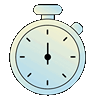
In less than 5 minutes, with our skill challenge, you can identify your knowledge gaps and strengths in a given skill.
